説明

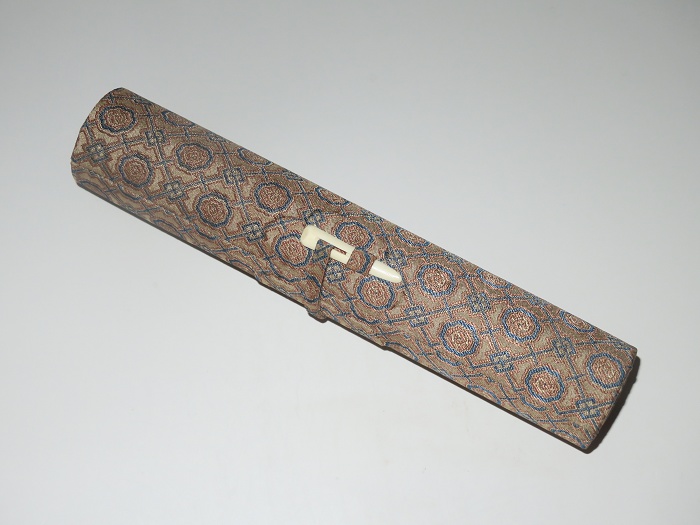
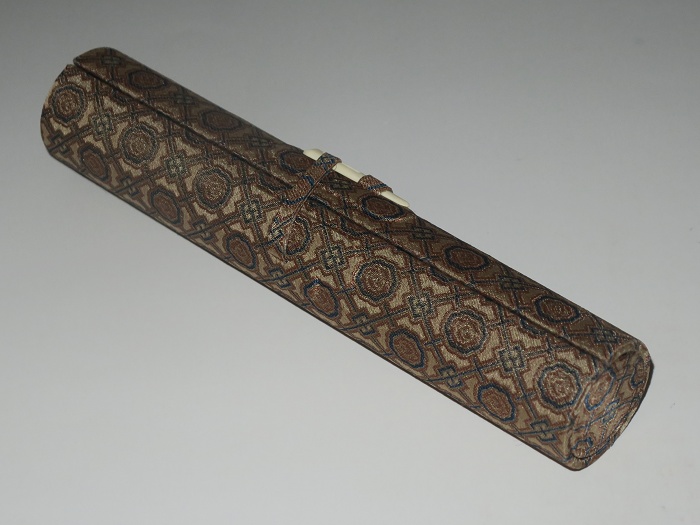
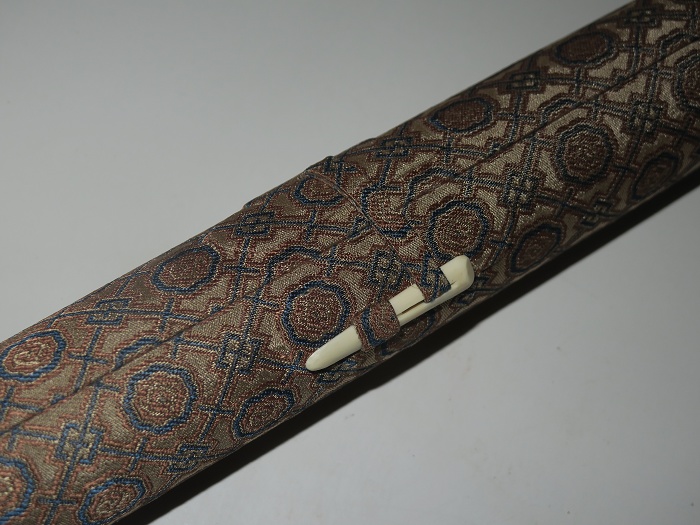




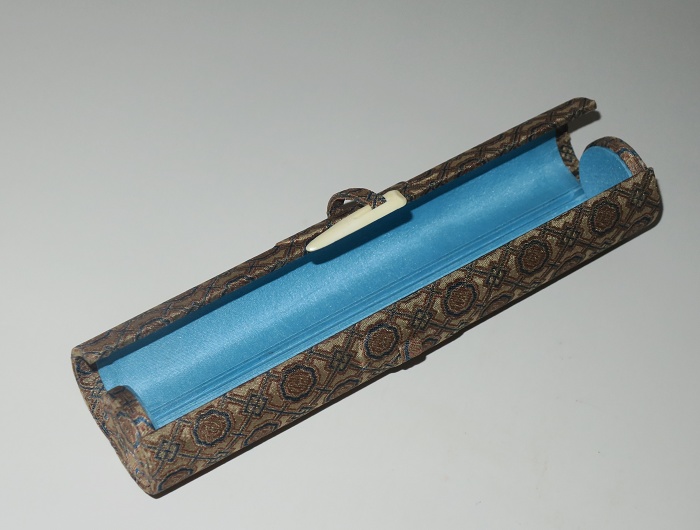
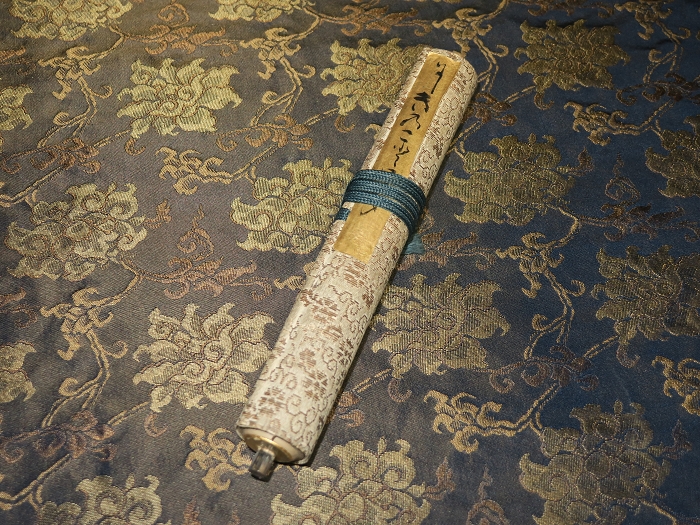
本作は恐らく暁斎出世まもなく最初の春画作品だろうと推測されている。腕力で歌麿、英泉とも匹敵できる海外にも熱心なファンが多い暁斎が、漫画発明人でありながら、恐らく日本最後の世界レベルの浮世絵名絵師だったと悲嘆。
慦はあまり見たことがない漢字だが、古来歓悦を表す一番上位の漢字だった。本作は優れた筆力と流派に留まらない独自の画風で海外でも人気の高い幕末-明治期の絵師、河鍋暁斎(1831-1889)による秀作。
走るような軽筆ながら、説得力のある人体描写で、宮廷の房事を種々に描き出す。躊躇いのない線、確かな描写力、絶妙な力の抜き方に、温かみのあるユーモラスな表情。薄墨と淡い色による着彩にも、美しい色の混ざり方、大雑把に見えて無駄のない効果的な色使い等、暁斎の仕事に重なる特色が見られる。

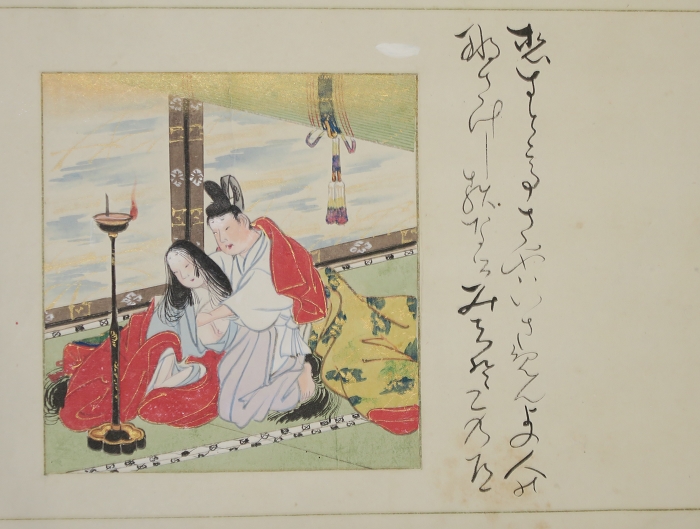
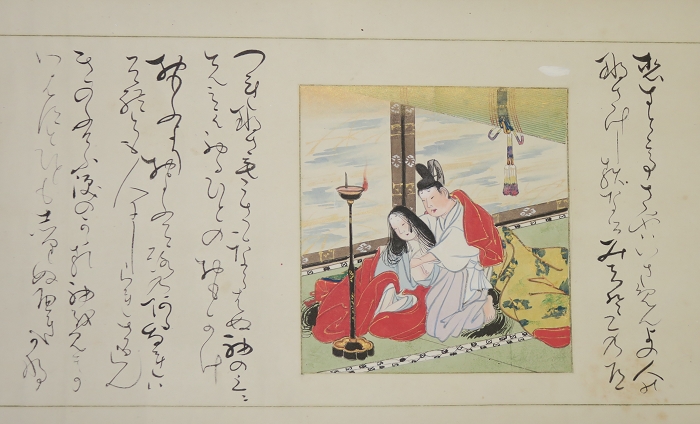
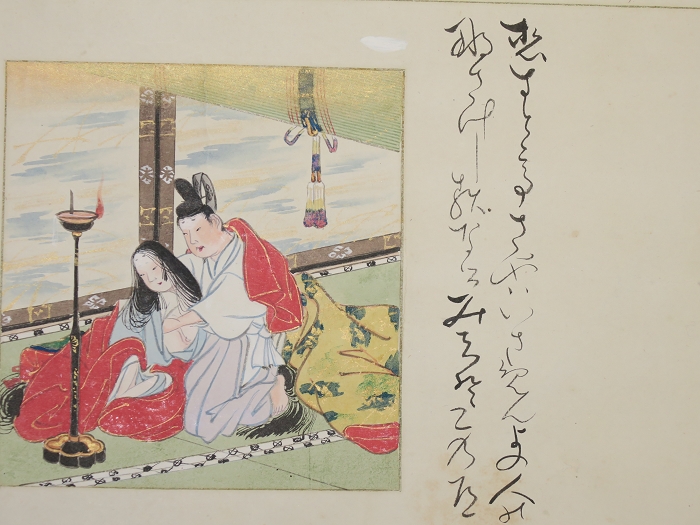
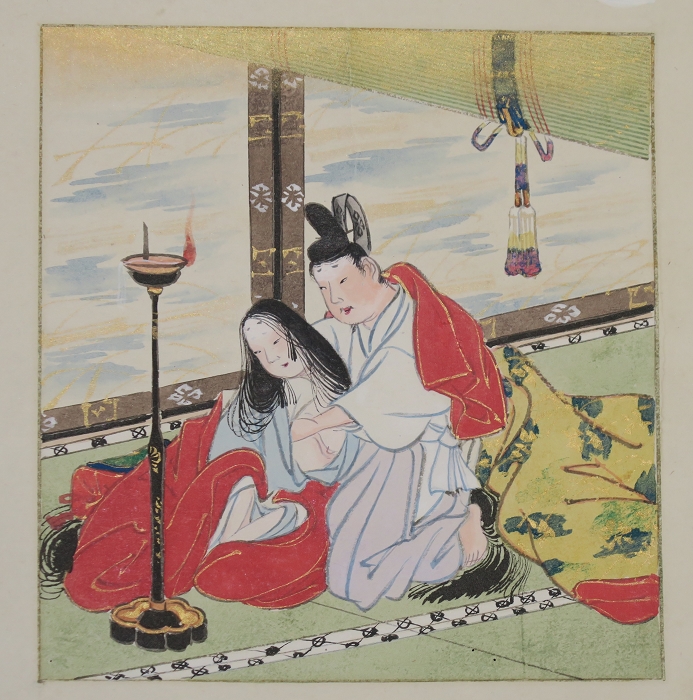
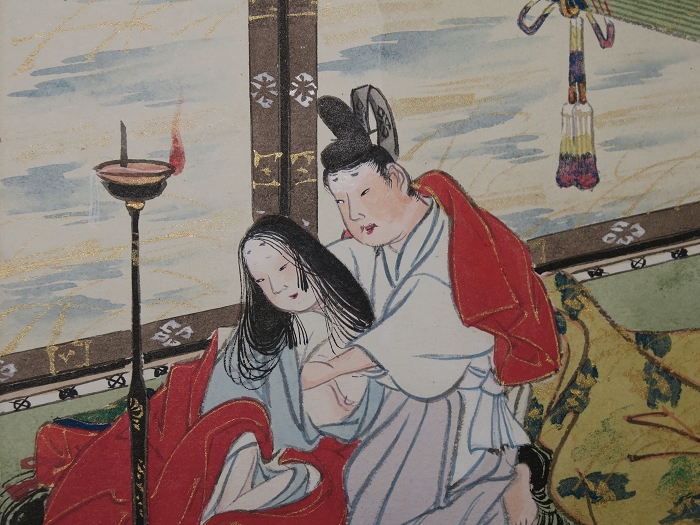
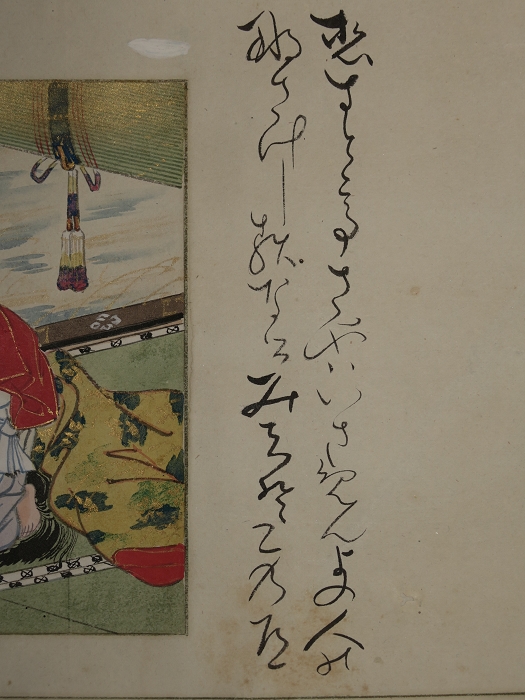
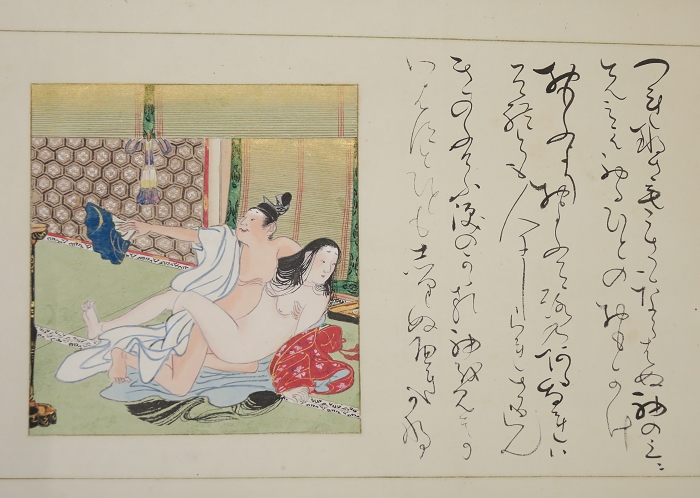

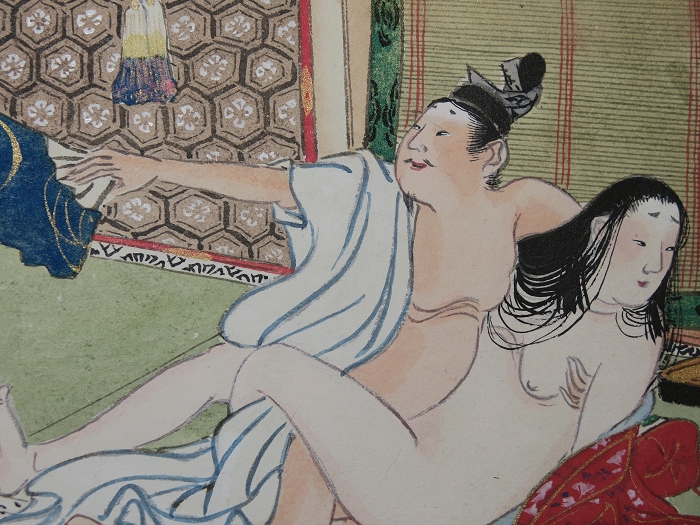
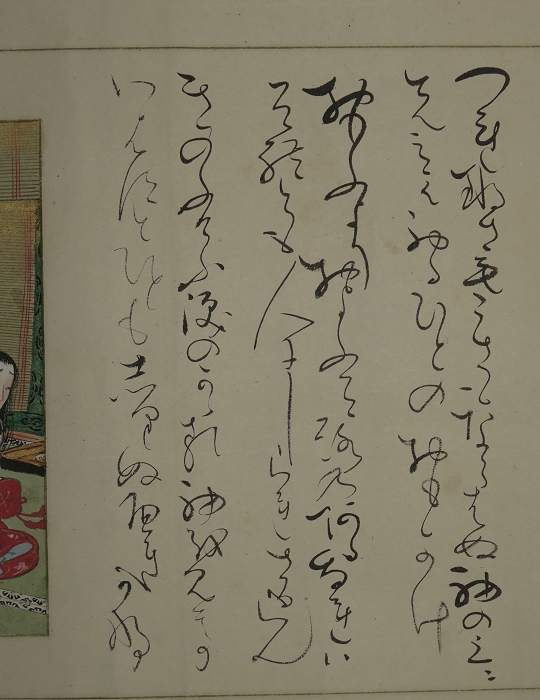
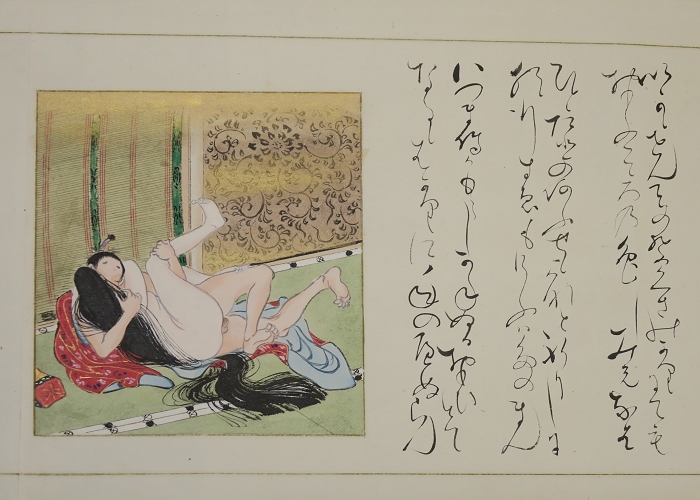
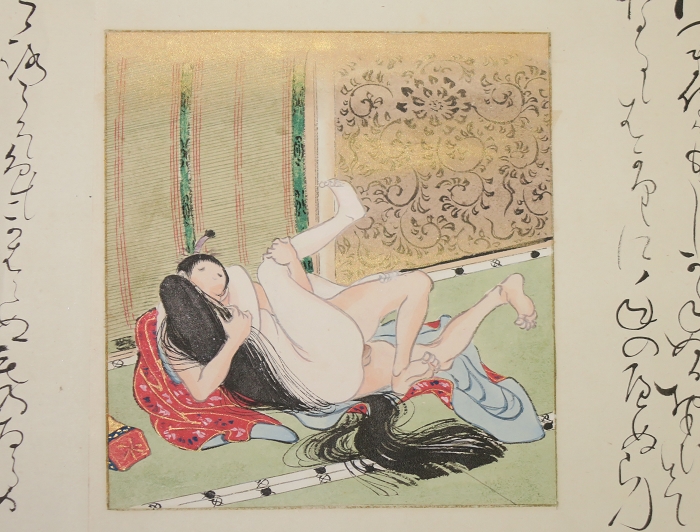


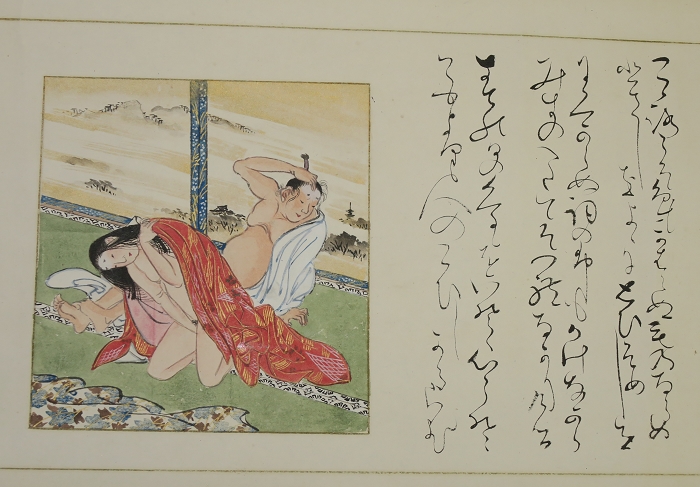


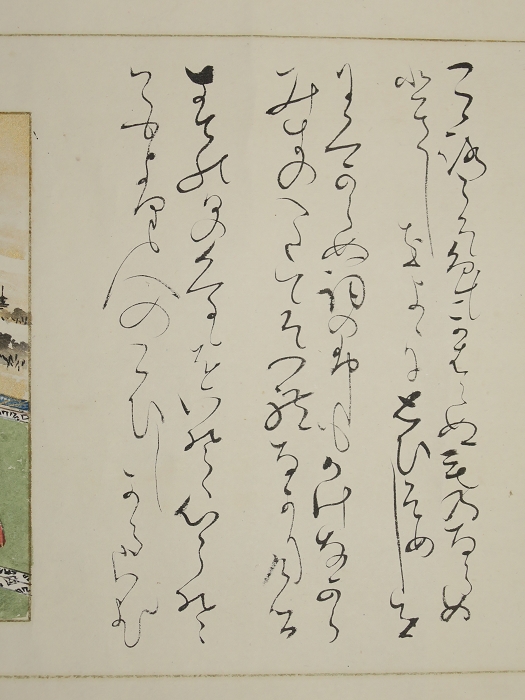
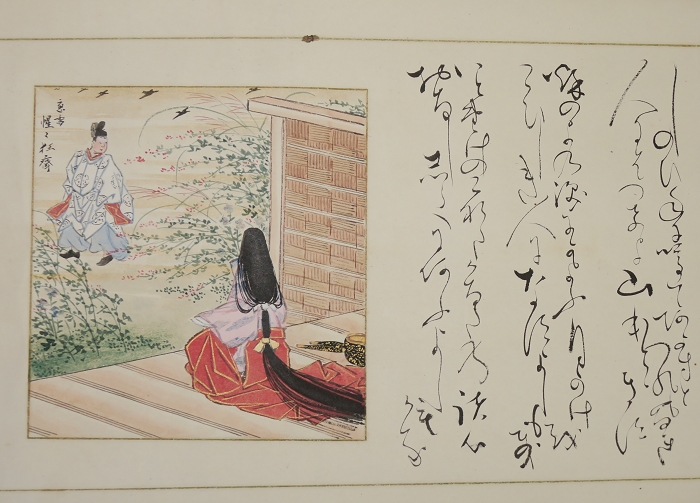
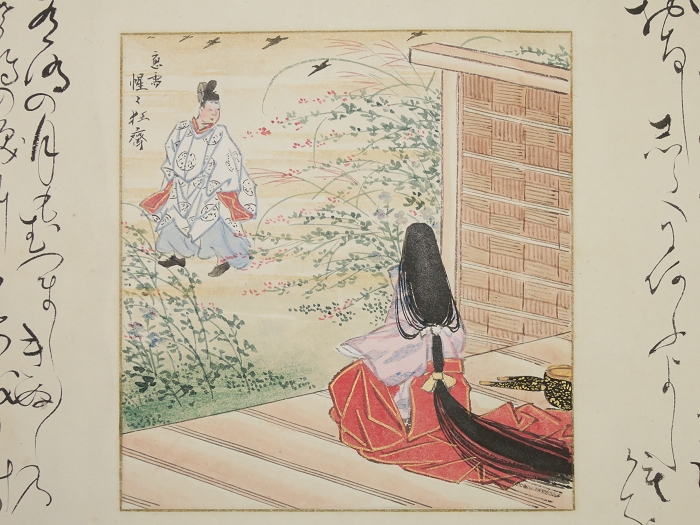
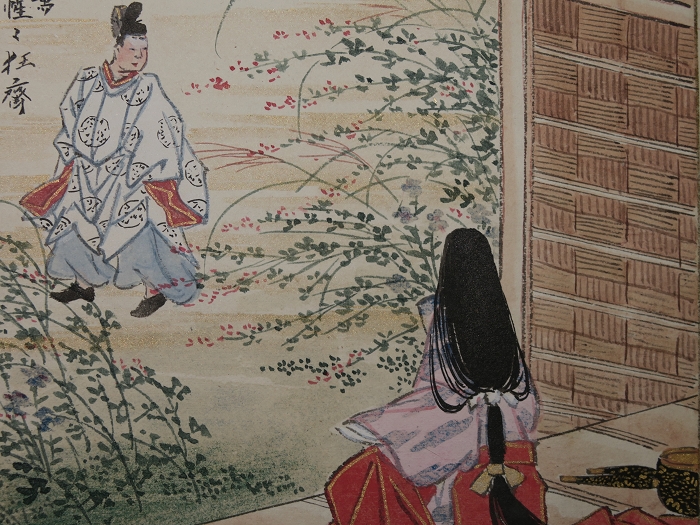
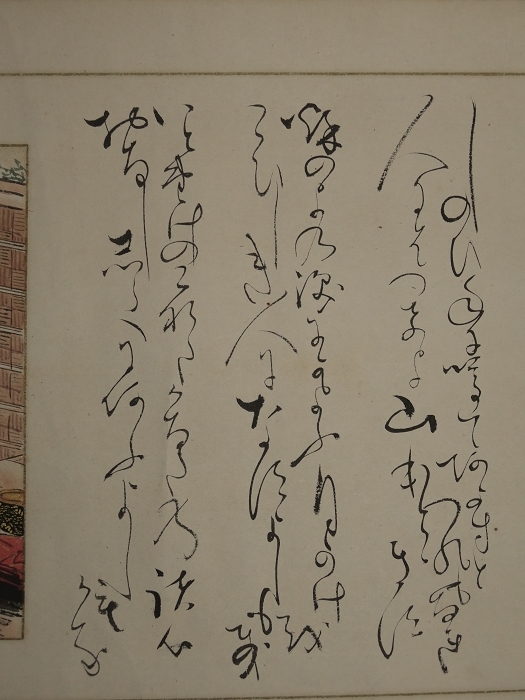
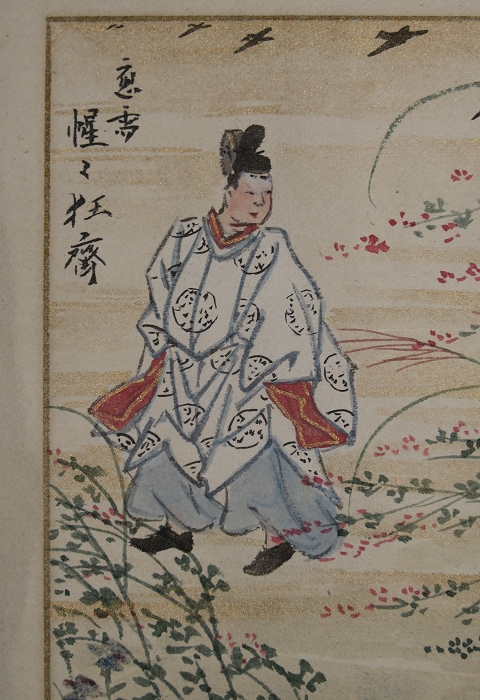
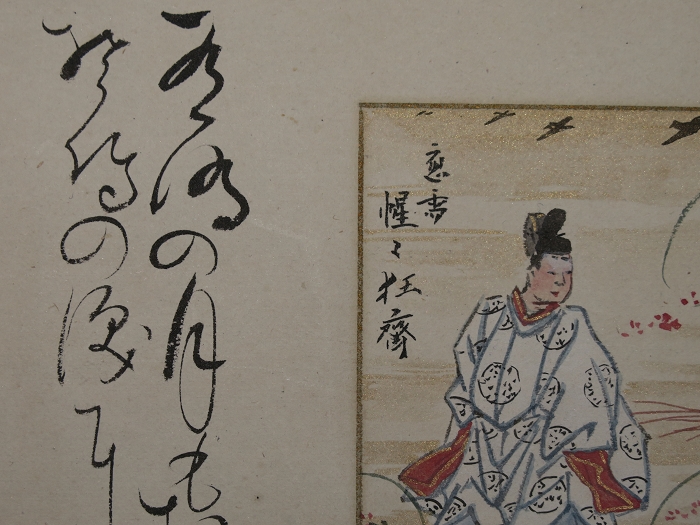
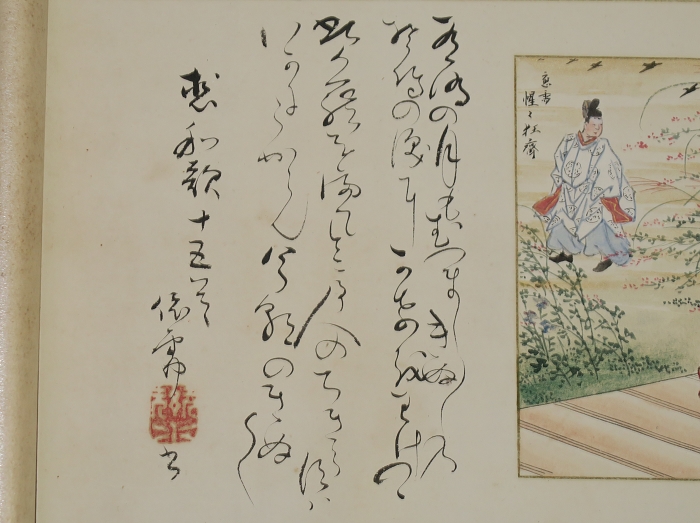
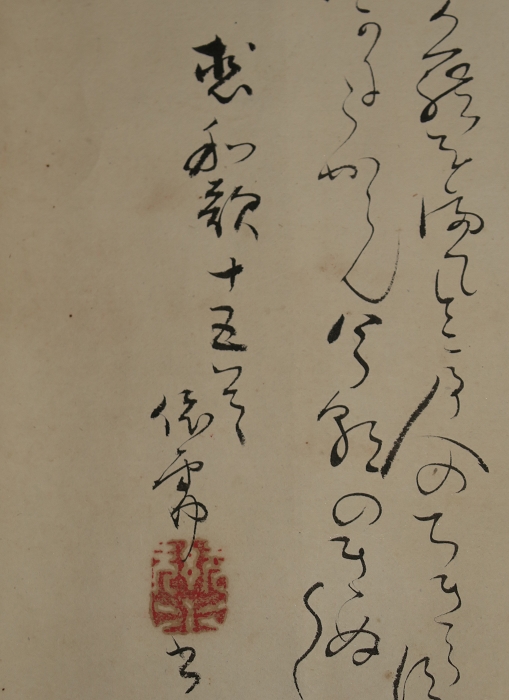
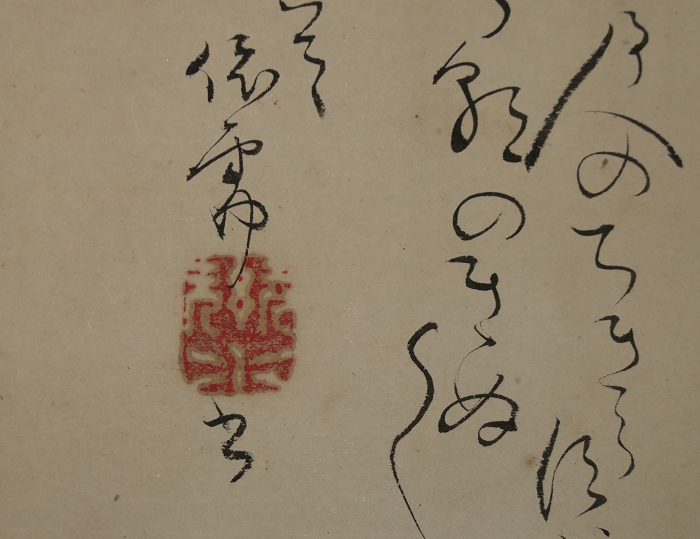

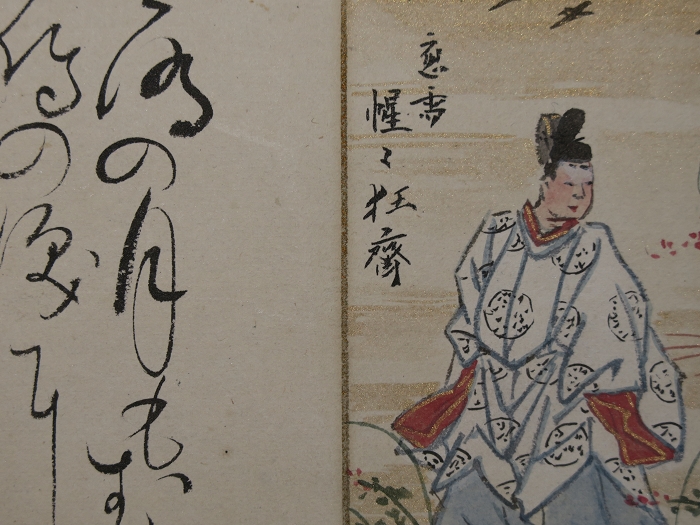
河鍋暁斎(かわなべ きょうさい,1831-1889):古川藩士川鍋喜右衛門の三男に生まれる。幼名は周三郎。3歳の頃から絵を描き始める。父に絵の天分を期待され、7歳で浮世絵師・歌川国芳に入門。10歳で狩野派の前村洞和、次いで狩野洞白に絵を学び、嘉永二(1849)年、洞白より洞郁陳之という画号を与えられる。以降、浮世絵、狩野派に限らずありとあらゆるジャンルの絵を描いた。
安政四(1857)年に絵師として独立。翌年(1858)から「河鍋狂斎」と号す。狂画、風刺画、錦絵などで人気を博す。明治三(1870)年風刺画の筆禍事件を起こして逮捕され、翌年まで投獄。明治四(1871)年1月、笞打ち50の刑を受けた後放免され。以後、画号を狂斎から暁斎に改める。
明治六(1873)年ウイーン万国博覧会に「神功皇后・武内宿禰の図」を送る。明治以後は新しい媒体として勃興していた新聞の挿絵や、演劇用の広告絵なども手掛けた。明治十四(1881)年第2回内国勧業博覧会にて、日本画の最高賞を受賞。明治二十二(1889)年4月26日胃癌により死去。
外国人との交流も盛んに行い、フランス人実業家エミール・ギメが連れてきた画家フェリックス・レガメと肖像画を競いあった。また、イギリス人建築家ジョサイア・コンドルを弟子にしている。
雅号も多し,恐らく日本一とは言えるだろう:有洞郁陳之(とういくのりゆき,嘉永二(1849)年~);狂斎(きょうさい,安政五(1858)年~明治三(1870)年);応需惺子暁楽;酒乱斎雷酔(しゅらんさいらいすい);惺々(せいせい);猩々庵(しょうじょうあん);如空(じょくう);畑狂者(はたけきょうじゃ,何れも安政六(1859)年~万延元(1860)年前後);周麿(ちかまろ,文久三(1863)年);暁斎(きょうさい,明治四(1871)年~明治二十二年(1870)。
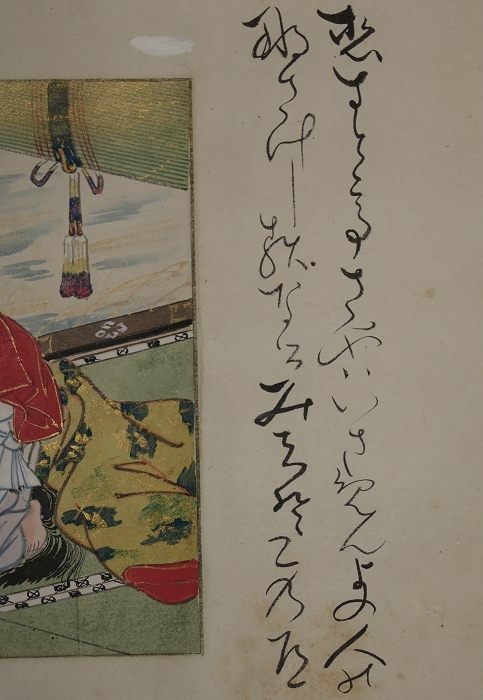
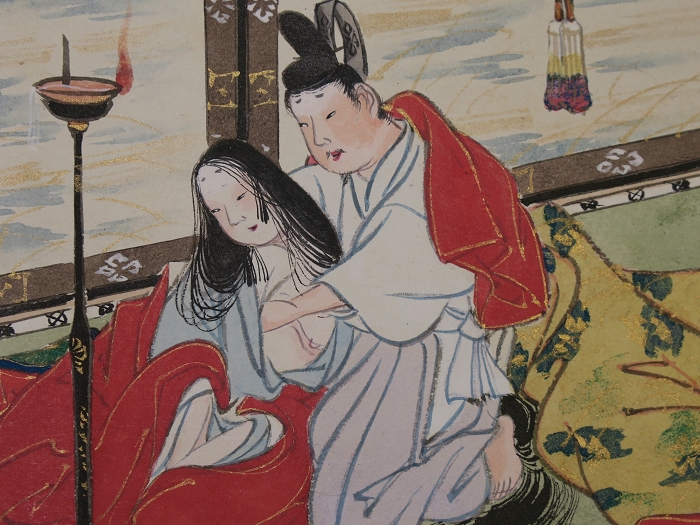
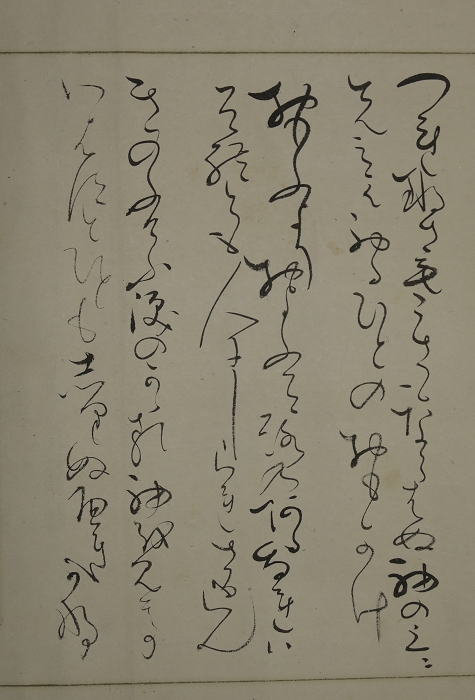
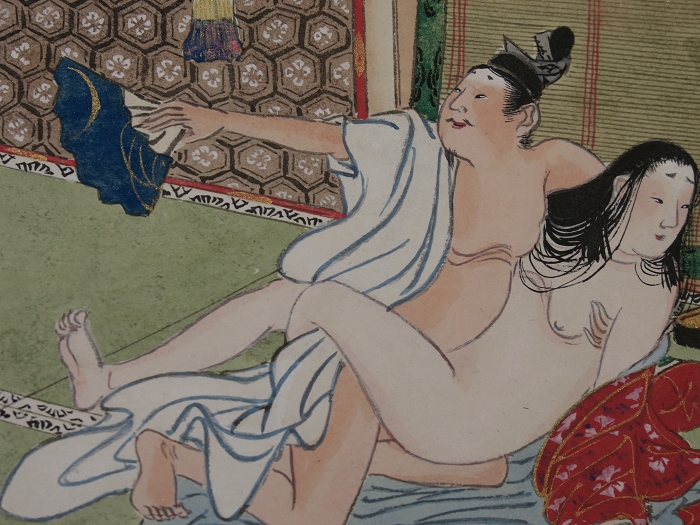

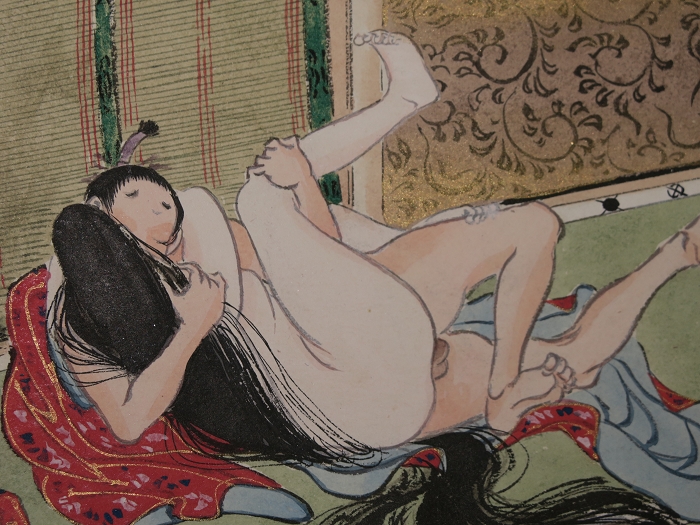
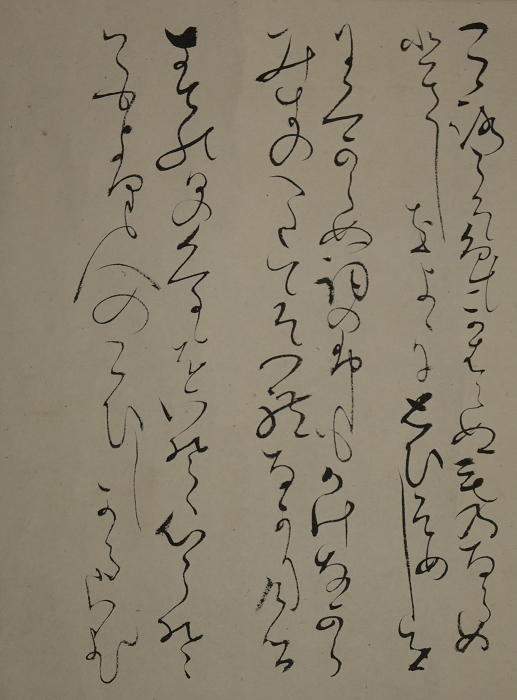
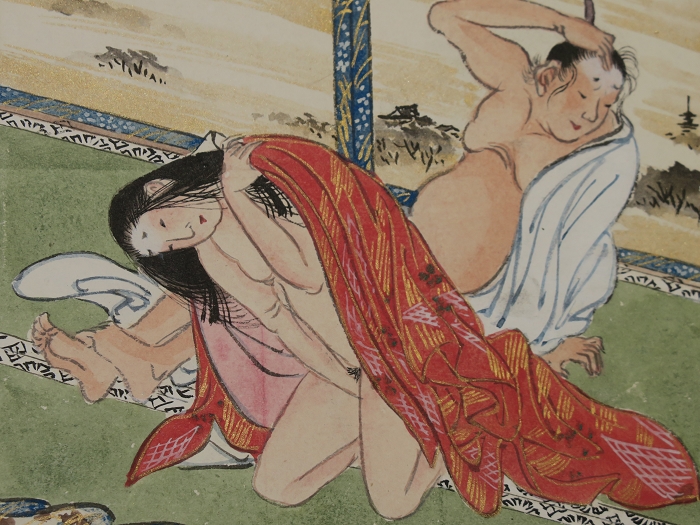


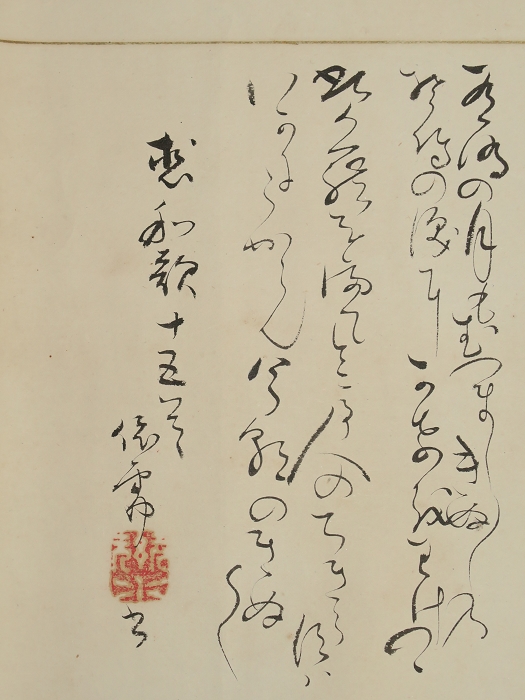
落款参考:寺島清旧蔵幽霊図,作者惺々狂斎(Shojo Kyosai,河鍋暁斎),出典美術画報九編巻十(1901年8月20日),現蔵国立文化財機構東京文化財研究所(009-10-011)。
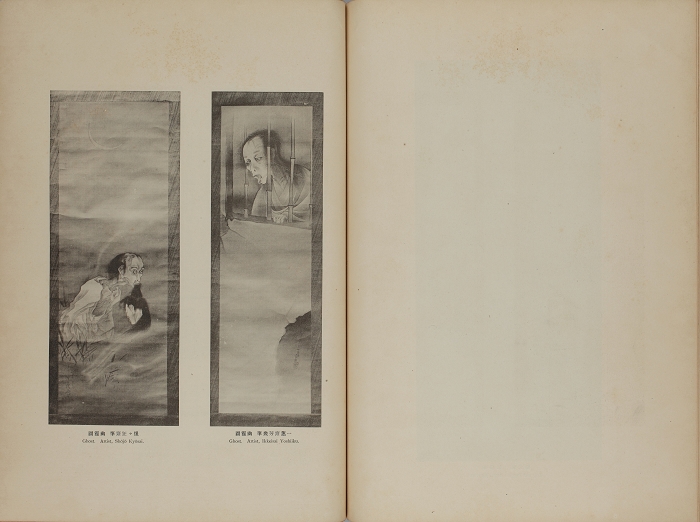

UNIQUE SET OF hand drawn scroll—Ode to Joy by [Kawanabe Kyōsai]
The outer dimensions are about 21×3.5×3cm (length and height), the shaft length is about 20.5cm, the length is about 18×153cm, and the main body is about 15.7×130cm. There are 5 spring paintings, 15 waka songs, Ink and color on paper, brocade mounted.
Inscription: 應需惺々狂斎、依需;seal:樂。 Special insect-proof box attached, extremely beautiful and in good condition.
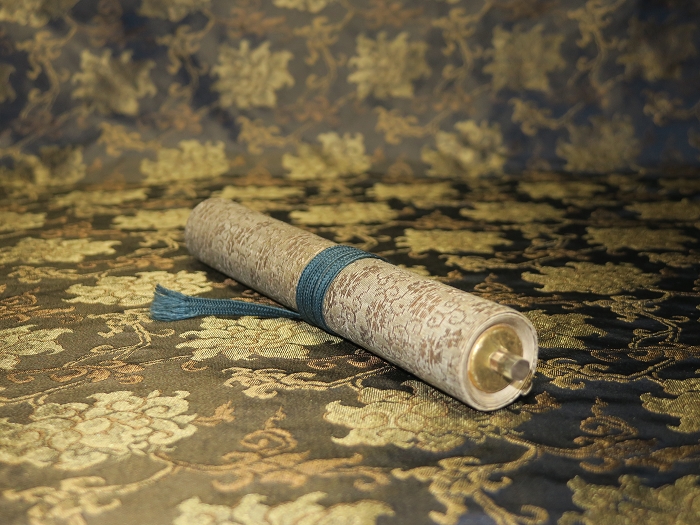
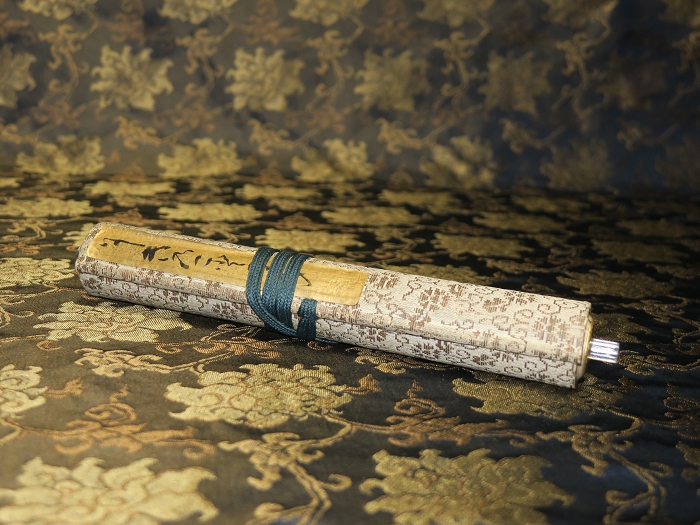
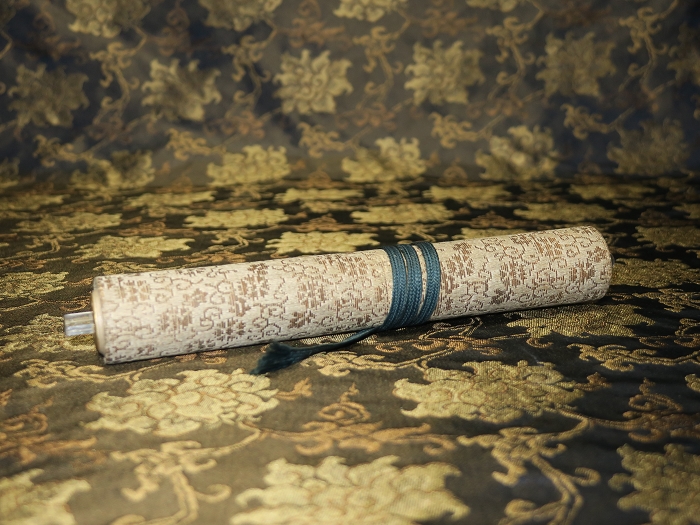
This work is an excellent work by Kawanabe Kyosai (1831-1889), a painter from the end of the Edo period to the Meiji period, who is popular overseas for his excellent penmanship and unique painting style that goes beyond school. Although it is written in a light, persuasive manner, it portrays the affairs of the imperial court in various ways. Lines without hesitation, solid descriptive power, exquisite power, and a warm and humorous expression. The use of light ink and light colors also shows the characteristics of Kyosai’s work, such as the beautiful mixture of colors and the effective use of color that looks rough but is not wasteful.
As of 2017, there are only 13 original Kawanabe Kyōsai spring paintings known to have survived, all of which are in the collection of London art dealer Israel Goldman. Goldman is the largest collector of Kyōsai ‘s (暁斎)paintings, which are unparalleled in the world regardless of their quality. It’s a pity that there are no spring paintings signed by “狂斎” in the collection.
Kawanabe Kyōsai (河鍋暁斎, May 18, 1831 – April 26, 1889) was a Japanese artist, in the words of art historian Timothy Clarke, “an individualist and an independent, perhaps the last virtuoso in traditional Japanese painting”.Living through the Edo period to the Meiji period, Kyōsai witnessed Japan transform itself from a feudal country into a modern state.
After working for a short time as a boy with ukiyo-e artist Utagawa Kuniyoshi, he received his formal artistic training in the Kanō school under Maemura Tōwa (前村洞和 ? – 1841), who gave him the nickname “The Painting Demon”, but Kyōsai soon abandoned the formal traditions for the greater freedom of the popular school.
During the political ferment which produced and followed the revolution of 1867, Kyōsai attained a reputation as a caricaturist. His very long painting on makimono (a horizontal type of Japanese handscroll/scroll) “The battle of the farts” may be seen as a caricature of this ferment. He was arrested three times and imprisoned by the authorities of the shogunate.
He took the art name Kyōsai in 1857, and in 1871 changed the first character of this name from 狂 (wild, crazy) to 暁 (dawn, enlightenment). 暁 has two On-readings, “kyō” and “gyō”, the latter being more well-known (many dictionaries provide only this reading), so the artist’s name is also falsely romanised as Kawanabe Gyōsai.
Soon after the assumption of effective power by the Emperor, a great congress of painters and men of letters was held at which Kyōsai was present. He again expressed his opinion of the new movement in a caricature, which had a great popular success, but also brought him into the hands of the police.
Kyōsai is considered by many to be the greatest successor of Hokusai (of whom, however, he was not a pupil), as well as the first political caricaturist of Japan. His work mirrored his life in its wild and undisciplined nature, and occasionally reflected his love of drink. Although he did not possess Hokusai’s dignity, power or reticence, he compensated with a fantastic exuberance, which always lent interest to his technically excellent draughtsmanship.
He created what is considered to be the first manga magazine in 1874: Eshinbun Nipponchi, with Kanagaki Robun. The magazine was heavily influenced by Japan Punch, founded in 1862 by Charles Wirgman, a British cartoonist. Eshinbun Nipponchi had a very simple style of drawings and did not become popular with many people, and ended after just three issues.
In addition to his caricatures, Kyōsai painted a large number of pictures and sketches, often choosing subjects from the folklore of his country, Nô drama, nature and religion, for example. A fine collection of these works is preserved in the British Museum; and there are also good examples in the Guimet Museum at Paris.
Erwin Bälz wrote in his diary that Kyosai died because of gastric cancer.A crater on Mercury has been named in his honor.
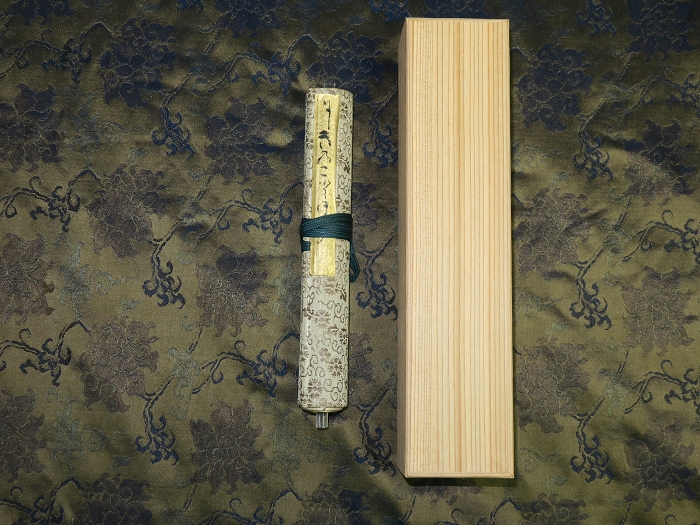
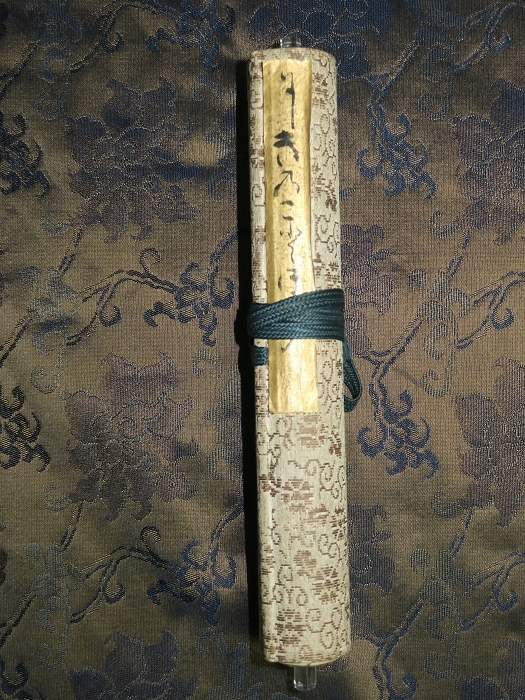
Shunga. ENSEMBLE UNIQUE DE parchemin dessiné à la main — Ode à la joie par [Kawanabe Kyōsai] Gouaches sur papier
Les dimensions extérieures sont d’environ 21 × 3,5 × 3 cm (longueur et hauteur), la longueur de la tige est d’environ 20,5 cm, la longueur est d’environ 18 × 153 cm et le corps principal est d’environ 15,7 × 130 cm. Il y a 5 peintures printanières, 15 chants waka, Encre et couleur sur papier, monté sur brocard.Boîte spéciale anti-insectes jointe, extrêmement belle et en bon état.
Ce travail est un excellent travail de Kawanabe Kyosai (1831-1889), un peintre de la fin de la période Edo à la période Meiji, qui est populaire à l’étranger pour son excellente calligraphie et son style de peinture unique qui va au-delà de l’école. Bien qu’il soit écrit d’une manière légère et persuasive, il dépeint les affaires de la cour impériale de diverses manières.
Des lignes sans hésitation, une puissance descriptive solide, une puissance exquise et une expression chaleureuse et pleine d’humour. L’utilisation d’encres claires et de couleurs claires montre également les caractéristiques du travail de Kyosai, telles que le beau mélange de couleurs et l’utilisation efficace d’une couleur qui a l’air rugueuse mais qui n’est pas du gaspillage.
Shunga est le terme générique japonais qui désigne l’art érotique, il signifie littéralement Image du printemps, le printemps étant un euphémisme et une figure de style exprimant la sexualité. Le terme Shunga ayant été réservé longtemps aux estampes, les recueils ou albums ont souvent été désignés par l’appellation Livres de l’oreiller, ou notes pour l’oreiller, etc. (Utamaro : Le chant de l’oreiller, 1788).
Les peintures respectent les canons de la représentation érotique japonaise : sexes surdimensionnés, pilosité, femmes à la peau blanche et hommes de couleur chair. Aucun élément de décor ne vient distraire l’oeil de l’acte sexuel (une seule peinture contient un miroir), les corps étant la plupart du temps vêtus de riches kimonos.
L’ensemble est d’une facture fine, les 2 peintures d’introduction, l’oiseau et les feuilles d’érable sont particulièrement réussies. Ce type de représentation était interdit au Japon et ne contient donc pas de signature, il est cependant évident qu’il existait des peintres dont c’était le métier et la spécialité et qu’on allait voir pour des commandes privées. Précieux et rare ensemble en superbe condition.





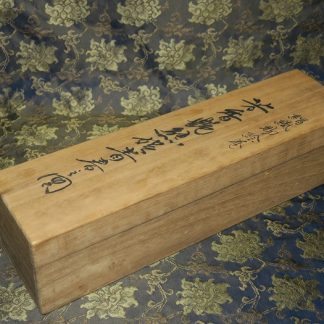
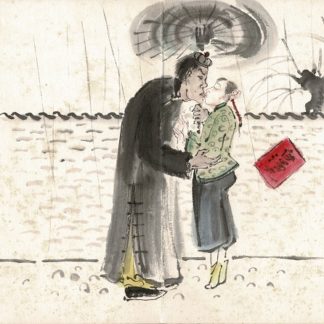

レビュー
レビューはまだありません。